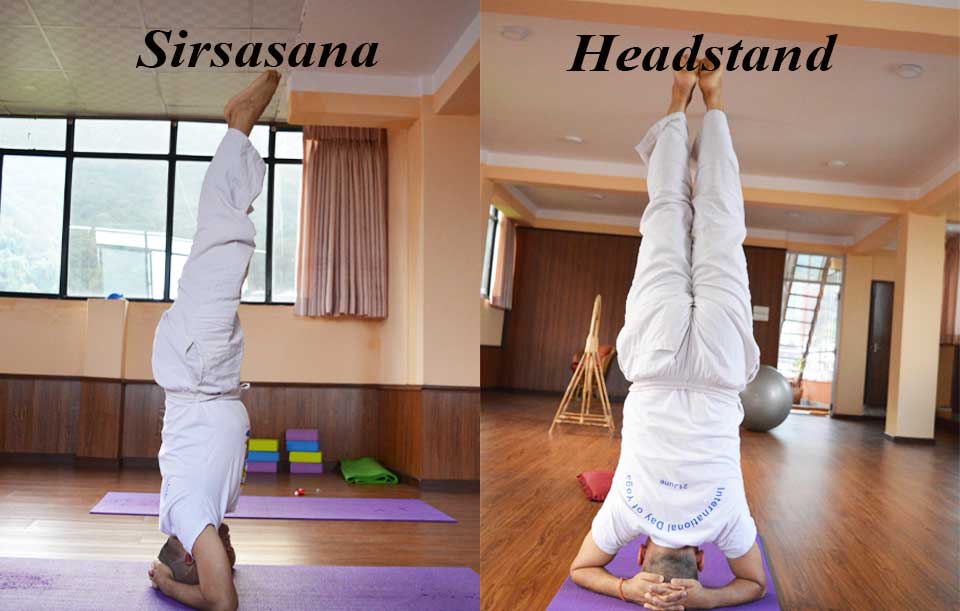Sirsasana ( Head Stand Pose)
8 Sep 2020 HYN Himalayan Yoga Academy

English : Head-stand Pose
Sanskrit : Sirsasana
Introduction :
Sirsasana consists of two words where, ‘Sirsa’ means ‘the head’ and “asana” means pose.It is also commonly known as headstand, also known as Salamba Sirsasana. It is literally known as the ‘king’ of asana but Aarogya (Therapeutic) point of view, sometimes it can be ‘killer’ in technological era instead of ‘King’ because of the illness complications such as Hypertension, Heart problems, Brain problems, Excess stress and the stage of beginners. In this yogasana pose the body is completely inverted and held up right where body is supported by the forearms, while the crown of the head rests lightly on the floor.
How to do Sirsasana :
Preapratory Phase:
It is very intesed postures, so we need to prepare very well.
i. Sukshma Vyayama:- Fingers; wrist, elbow and shoulder exercises; Neck Exercises, Eyes exercises;
ii. Pre-aasanas: Tadasana, Vajrasana, Bhringasana, Shasankasana, Dolphine Pose
Methods:
- First of All, Lower yourself down on your knees or from Shasankasana, place your arms on the floor and interlock your fingers in such a way that the weight of your upper body is focused on your arms.
- Then, extend your legs and lift your buttocks in the air to enter into the dolphin pose.
- Rest your head on the interlocked finger to give it a base. Lift your heels and rest your legs entirely on your toes.
- Now slowly bend your knees and slowly lift one of your legs off the floor.
- Try to slowly lift your other leg by folding your knees by slightly pushing the weight of your body to your head.
- Stretch your legs straight, maintain the balance of your body and hold the pose for half a minute to 3 minutes, and more depending upon your comfort level.
- We can perform different variations of legs and also Ardha or padmasana as well.
- To come out of the pose, slowly bend your knees and try placing your feet on the floor one by one and hold in Shasankasana.
- Roll back into the sitting position Vajrasana, Ardha -Vajrasana and Tadasana and let your body relax for a minute or two in Shavasana.
Note: Counter Pose of Sirsasana is Tadasana
Benefits of Sirsasana :
- It keeps all organs free and relax.
- It strengthens the arms, core, legs, and back.
- It increases the blood circultion and impulses communication.
- It improves the immunity power.
- Due to the inverted pose, there is better circulation of blood to brain and eyes.
- This pose highly improves the nervous system and strengthens the spine.
- It’s the solution for insonmia, loss of concentration, loss of memory, anxiety, in beginning stages of stress and anger management.
- Inverted pose puts pressure on pituitary and pineal glands which in turns improve its efficiency.
Contradictions :
- People having any form of back injury.
- People suffering blood pressure.
- People with neck injury.
- People having any heart disease.
- Pregnant women or women who are menstruating shouldn’t practice this pose.
We will teach you how to do Sirsasana properly.Join our 200hr or 300hr yoga teacher training program at Himalayan Yoga Academy in Nepal. You will be properly guided by our experienced teachers.
